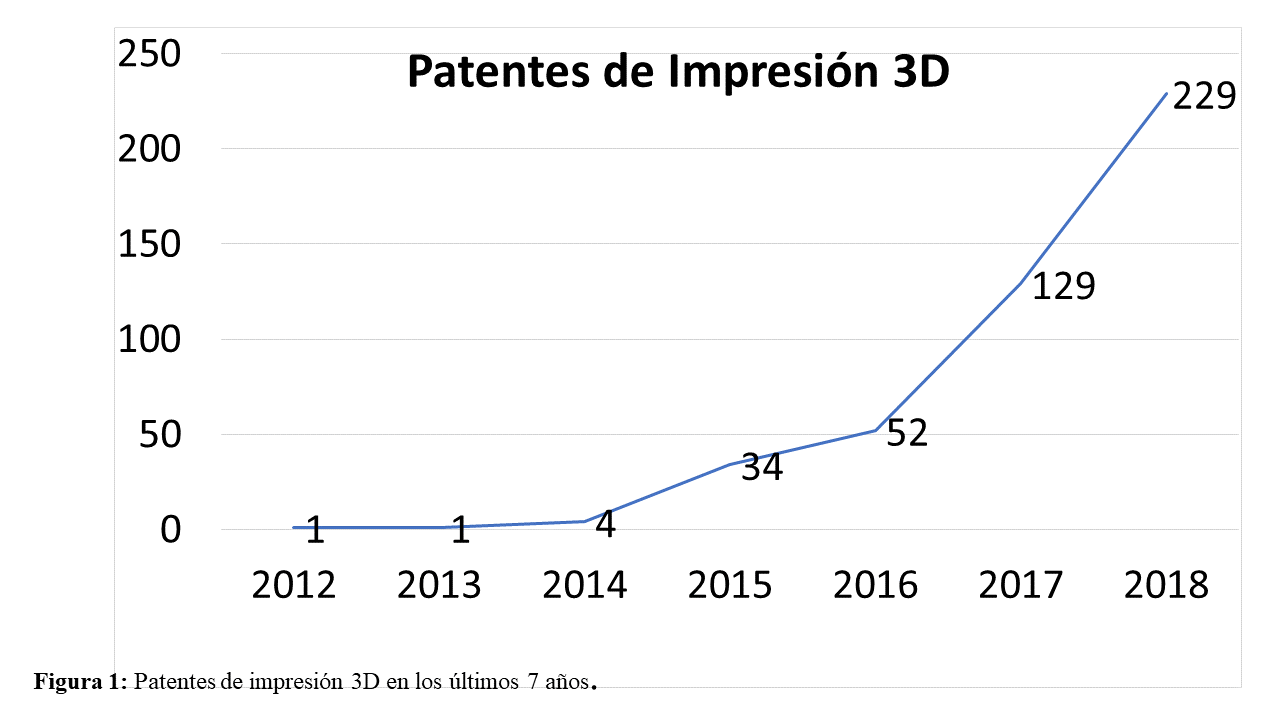The future of additive manufacturing, through patent analysis
DOI:
https://doi.org/10.37636/recit.v24144152Keywords:
Additive manufacturing, Patents, Technological forecasting, Manufacturing.Abstract
In the present work an analysis is carried out using the database of the United States Patent and Trademark Office, considered the most extensive and important worldwide, reviewing the patents registered by the main manufacturers and developers of additive manufacturing technology to industrial and domestic level, to make a technological forecast that helps identify the trend that the development of additive manufacturing will have, visualizing what the manufacturing principle will be by this technological tool, which will become the industry standard and that predominates in the market. In the results obtained in this analysis, everything seems to indicate that the manufacturing by deposition of molten plastic will become the dominant technology in this segment of the industry.Downloads
References
A. Carrión, "Technology forecast on ink‐jet head technology applications in rapid prototyping," Rapid Prototyp. J., vol. 3, no. 3, pp. 99-115, 1997. https://doi.org/10.1108/13552549710185680. DOI: https://doi.org/10.1108/13552549710185680
W. Gao et al., "The status, challenges, and future of additive manufacturing in engineering," Comput. Des., vol. 69, pp. 65-89, 2015. https://doi.org/10.1016/j.cad.2015.04.001. DOI: https://doi.org/10.1016/j.cad.2015.04.001
MPR, "3D printing to swallow 40% market share," Met. Powder Rep., vol. 70, no. 3, p. 153, 2015. https://doi.org/10.1016/j.mprp.2015.02.016. DOI: https://doi.org/10.1016/j.mprp.2015.02.016
3D Systems, "Our History," Our history, 2017. [Online]. Available: https://es.3dsystems.com/our-story. [Accessed: 22-May-2017].
J. W. Stansbury and M. J. Idacavage, "3D printing with polymers: Challenges among expanding options and opportunities," Dent. Mater., vol. 32, no. 1, pp. 54-64, 2016. https://doi.org/10.1016/j.dental.2015.09.018. DOI: https://doi.org/10.1016/j.dental.2015.09.018
R. Singh and H. K. Garg, "Fused Deposition Modeling - A State of Art Review and Future Applications BT - Reference Module in Materials Science and Materials Engineering," Elsevier, 2016. https://doi.org/10.1016/B978-0-12-803581-8.04037-6. DOI: https://doi.org/10.1016/B978-0-12-803581-8.04037-6
Department. of Commerce, "United States Patent and Trademark Office," 2015. [Online]. Available: http://patft.uspto.gov.
M. Annoni, H. Giberti, and M. Strano, "Feasibility Study of an Extrusion-based Direct Metal Additive Manufacturing Technique," Procedia Manuf., vol. 5, pp. 916-927, 2016. https://doi.org/10.1016/j.promfg.2016.08.079. DOI: https://doi.org/10.1016/j.promfg.2016.08.079
Stratasys, "Champion Motorsport: FDM Empowers Champion Motorsport to Create Strong, Beautiful Parts for Porsche," 2014. [Online]. https://energygroup.it/getattachment/a46abf08-c84f-46a4-9ccf-314f7eec5974/Champion-Motorsport-FDM-Soluble-cores-for-compos.aspx. [Accessed: 01-Jan-2017].
X. Wang, M. Jiang, Z. Zhou, J. Gou, and D. Hui, "3D printing of polymer matrix composites: A review and prospective," Compos. Part B Eng., vol. 110, pp. 442-458, 2017. https://doi.org/10.1016/j.compositesb.2016.11.034. DOI: https://doi.org/10.1016/j.compositesb.2016.11.034
R. K. Chen, Y. Jin, J. Wensman, and A. Shih, "Additive manufacturing of custom orthoses and prostheses-A review," Addit. Manuf., vol. 12, Part A, pp. 77-89, 2016. https://doi.org/10.1016/j.addma.2016.04.002. DOI: https://doi.org/10.1016/j.addma.2016.04.002

Published
How to Cite
Issue
Section
Categories
License
Copyright (c) 2020 Manuel Javier Rosel Solís, Javier Molina Salazar, Alex Bernardo Pimentel Mendoza, Vladimir Becerril Mendoza, Juan Antonio Paz González, Yuridia Vega

This work is licensed under a Creative Commons Attribution 4.0 International License.
The authors who publish in this journal accept the following conditions:
The authors retain the copyright and assign to the journal the right of the first publication, with the work registered with the Creative Commons Attribution license 4.0, which allows third parties to use what is published as long as they mention the authorship of the work and the first publication in this magazine.
Authors may make other independent and additional contractual agreements for the non-exclusive distribution of the version of the article published in this journal (eg, include it in an institutional repository or publish it in a book) as long as they clearly indicate that the work it was first published in this magazine.
Authors are allowed and encouraged to share their work online (for example: in institutional repositories or personal web pages) before and during the manuscript submission process, as it can lead to productive exchanges, greater and more quick citation of published work (see The Effect of Open Access).











